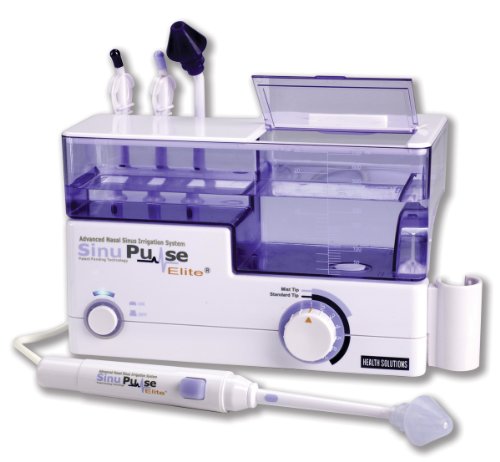!±8± SinuPulse Elite Advanced Nasal Sinus Irrigation System
 | Price : $79.95
| Price : $79.95Post Date : Dec 25, 2011 16:03:04 | Usually ships in 24 hours
The SinuPulse Elite was developed and engineered in Switzerland to be the best, most advanced sinus and nasal irrigation system in the world complete with state-of-the-art electronics and Intellipulse technology. Featuring a patented SinuMist function it is the only irrigator capable of delivering both a gentle pulsating mist spray for soothing relief and a more thorough pulsating rinse to cleanse the sinuses and massage the nasal cilia to their normal, healthy state. With the pulsating atomizer spray and pulsating cleansing rinse it really is like having two units in one! The SinuPulse Elite is a soothing drug free device to relieve symptoms caused by sinus infections, sinusitis, allergies and the common cold including: post nasal drip, cough, congestion, sinus headaches, and irritated nasal passages. Recommended by leading health care professionals pulsating irrigation is supported by published medical reports. The SinuPulse Elite advanced features include: state-of-the-art Micro Touch power button, electronic LED display, fully adjustable pressure and pause control on handle, hypo allergenic design, calibrated pulse rate, quiet operation, measurement scale, hi-capacity water tank with hygienic cover, soft color coded nasal tips for family members, and sinus treatment information. "I recommend the SinuPulse Elite from Health Solutions Medical Products. Our team has been using their sinus irrigation products as part of our regular healthcare regimen. We have found the products help our players that suffer from allergies and sinus problems." Gary Vitti, 6X NBA World Champion Head Athletic Trainer of the Los Angeles Lakers. Bonus Offer: Now includes 2 Throat Irrigator Tips with Tongue Cleaner attachment for enhanced breath control (mist spray and rinse)
More Specification..!!
Upright Bike Exercise Fast Buyers Calories In Flavored Coffee Cheep Bcs Garden Tiller









